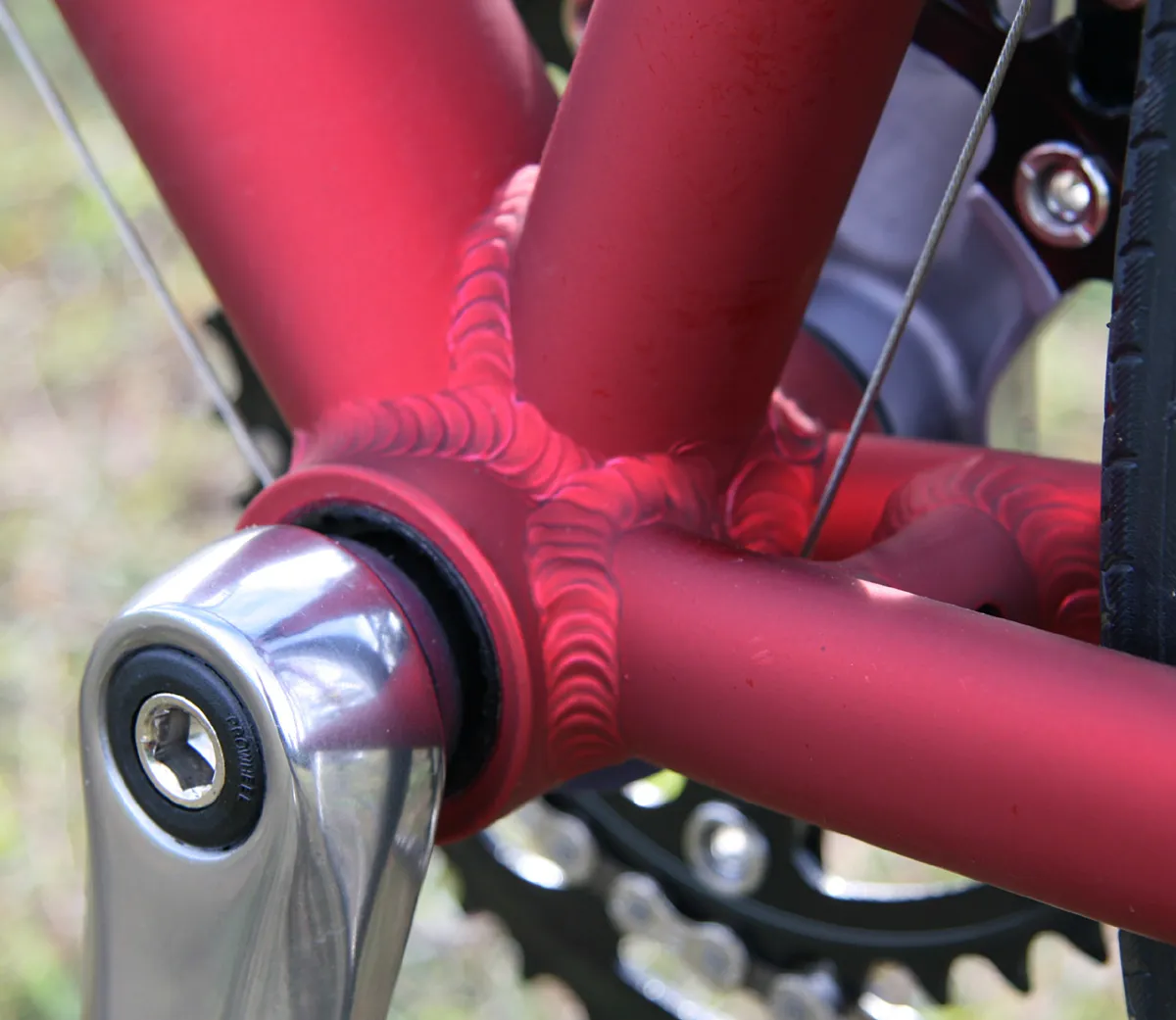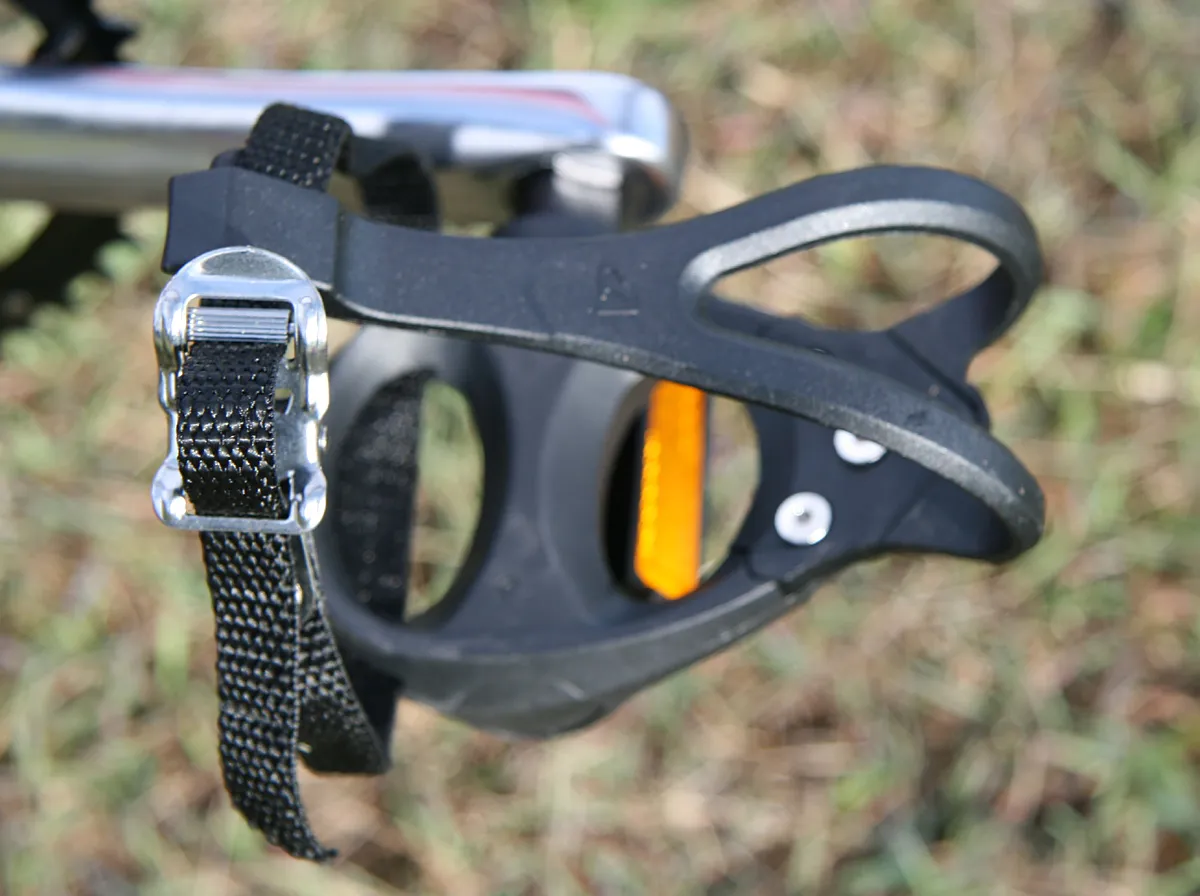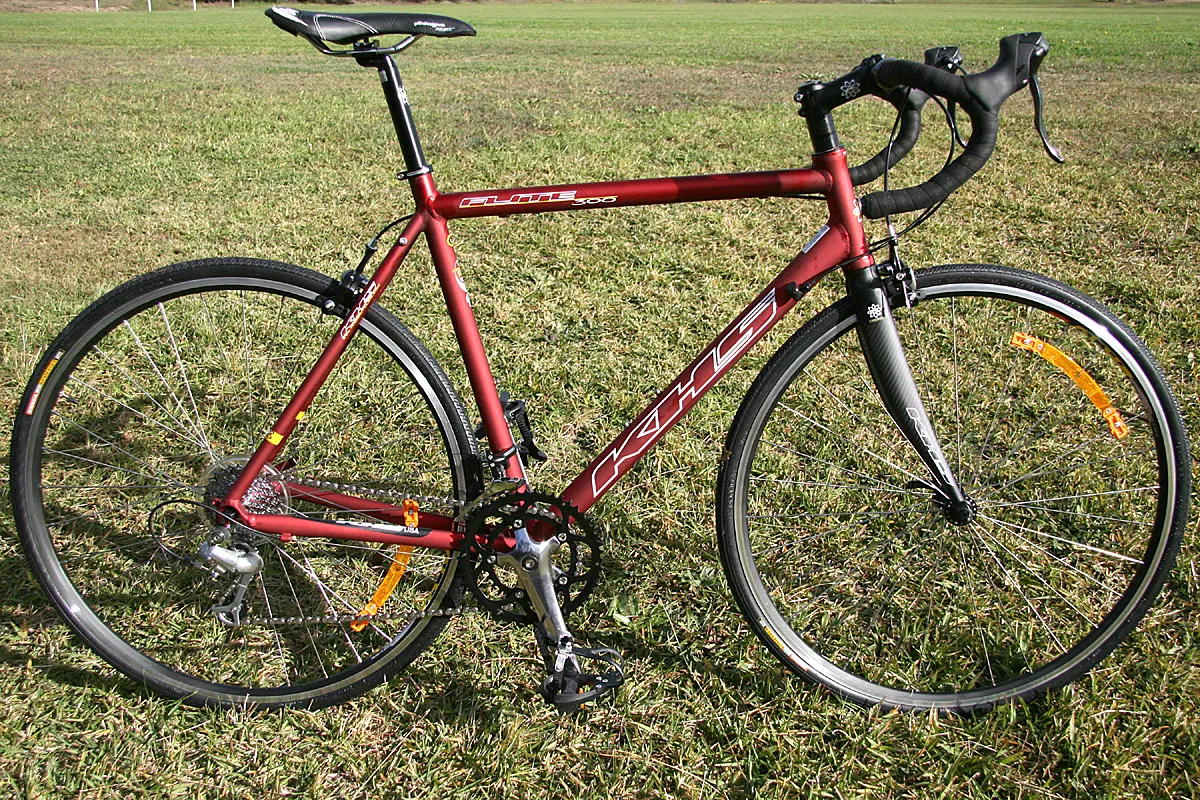Good road bikes under a grand (Australian dollars) are rare. KHS's most popular road bike deserves its status, delivering a finely calculated compromise between price and performance.
At AU$939, the KHS Flite 300 isn’t a super-light, super-spendy ProTour bike, but it’s confidence-inspiring and pleasant to ride. Its combination of decent tubing and components and sensible-width 26mm tyres makes this a road bike that’s welcoming to beginners. It would also make a great commuter for more experienced riders who don’t want to subject their race-day bikes to the urban moonscape.
Ride
The Flite 300's handling is even-tempered and predictable. Riders who cross over from mountain biking - the obvious audience for a road bike like this - will find it pleasantly light and lively, but that's mostly a function of the lower weight compared to your typical MTB.
Compared to other road bikes it treads a line between the quick-steering, almost nervous response of a criterium bike and the steady, long-distance manners of a European stage race bike: a good compromise that makes it a great introduction to road bikes.
Compared to lighter, spendier road bikes, the Flite 300 does lack a certain something. The sheer lack of mass of a 7kg bike means its easier to propel and tends to be floatier - it transmits less road buzz to the rider in part because there's less bike to act as a sounding board. The Flite 300's relative heft does mean it feels a shade dead, but that's compared to road bikes several times the price. Against a mountain bike or hybrid in its price range, it's a butterfly.
Frame
The KHS is built on a startlingly good chassis. Not only are its double-butted 7005 aluminium tubes welded tidily, but it boasts a few thoughtful details that indicate it hasn't just been specced down to a price.
For a start, KHS has realised that this bike won't just get used for training or entry-level racing. To make it more versatile, there are bosses on the dropouts and chainstays for a rack, so it'll do duty as a fast commuter.
The right hand seatstay has a chain pip, providing a place to hang your chain when the wheel's out. The down tube boasts old-style lever mounts, which looks like a retro touch until you realise it allows KHS to use Shimano's barrel adjusters. In our experience these are easier to use and stay adjusted better than barrels in threaded bosses.
Up front, we find a decent, entry-level carbon fiber fork, mounted in a Cane Creek semi integrated headset, and rounding out a package that wouldn't look wrong hung with Shimano 105 or even Ultegra components.
Equipment
As you'd expect at this price, the components are basic but functional. Shimano Sora levers take care of the controls, and drive a Shimano 2200 front derailleur and Tiagra rear mech. Brakes are Tektro dual-pivots jobs that look a lot like Shimano brakes but lack their bite and authority, probably because of the soft pad material.
Most Shimano STI units have a two-part brake lever that doubles as a shifter. Push the main lever and you work against the derailleur spring; push the secondary lever and you release the ratchet and work with it. On the Sora units, the role of the secondary lever is taken by a small switch on the lever body. This is easier to operate from the hoods than a standard STI unit, but provides no ability to shift from the drops, which is annoying if you find you want a gear or two higher while descending.
The front end of the transmission is an anonymous 50/34 compact chainset. With the SRAM 11-28 eight-speed cluster that gives a wide range of gears that will get road rookies up all but the most brutal inclines. However, more experienced riders will find the spread of gears a bit gappy - the big jump between the top two sprockets is especially noticeable.
The chainset on our size L test bike has 172.5mm cranks, another nice piece of attention to detail. XL also uses 172.5mm, XXL gets sizes get 175mm, while the sizes S and M have 170mm.
KHS has kept the budget under control in the contact points. There's nothing structurally wrong with the anonymous aluminium bar and stem, or the San Marco Ponza Lux saddle, but there's nothing posh about them either. They just work.
The one-bolt seatpost, however, is a bit too basic for our taste. The notches in the adjustment are fairly coarse, and it's a matter of luck if you can get the saddle angle right. There are inexpensive two-bolt posts out there that would do the job far better without blowing the budget.
You might also have to get your dealer to switch the stem, and maybe the bars too. The stock stem on our sample was way too short. Admittedly, we're accustomed to riding road bikes, and a beginner might not be, but that could be handled by a slightly longer stem, say 110mm, instead of the 90mm unit fitted. Getting the position right isn't helped by the short curve of the handlebar which has very little forward extension. Even with a 140mm stem, it felt cramped.
Higher-end road bikes often come with no pedals at all. KHS at least provides you the ability to ride home from the bike shop with a pair of basic resin platform pedals with clips and straps.
Wheels
Nothing eye-opening here: Weinmann DA-16 rims are laced to Formula hubs with 2mm plain gauge spokes. This is a basic, functional pair of wheels that's proving reliable, but you wouldn't accuse them of being light.
The same goes for the tyres, 26mm Kenda Kontenders that more than any other part of the spec say 'this bike has a practical bent.' KHS could have fitted 23mm tyres for the same money, but the fatter rubber improves comfort and road-holding and provides some protection for the rims against newbie errors like slamming potholes.
The bottom line
The great thing about the KHS Flite 300 is that it has a frame that wouldn't look silly with far better components. You wouldn't want to go dressing it in Shimano Dura-Ace or Campagnolo Record and all the carbon you can eat, but upgrading components as they wear out would eventually yield a very nice bike indeed. Lighter wheels and tyres would immediately give it a boost.
The only problem with this strategy is the eight-speed transmission. Eventually you're going to be looking at a simultaneous change of shifters, chain and cluster - at least - to jump to ten-speed and that'll be expensive. If the frame fits you well, though, it will be worthwhile.
Prices
USA: $659
>Australia: $939





















